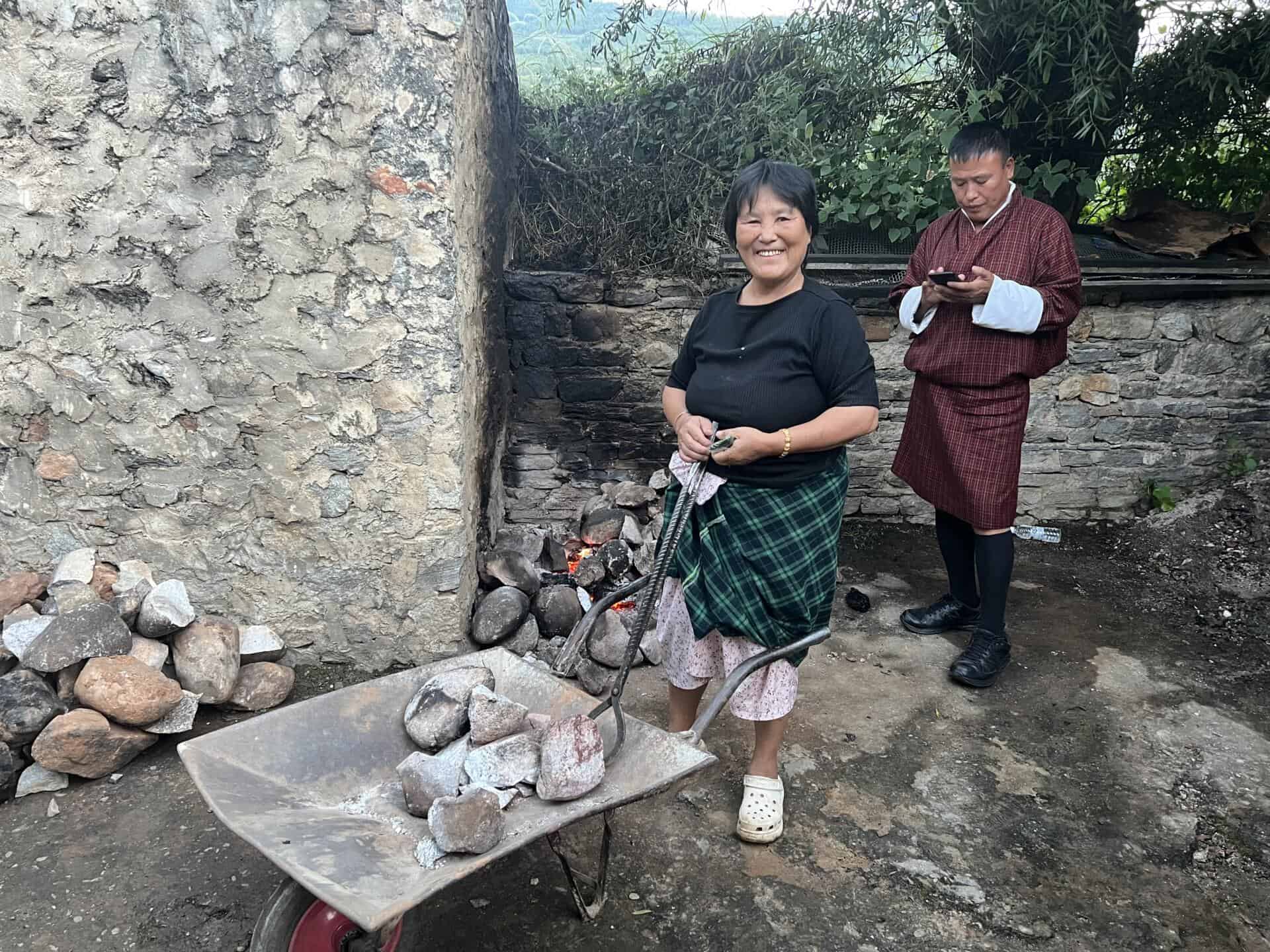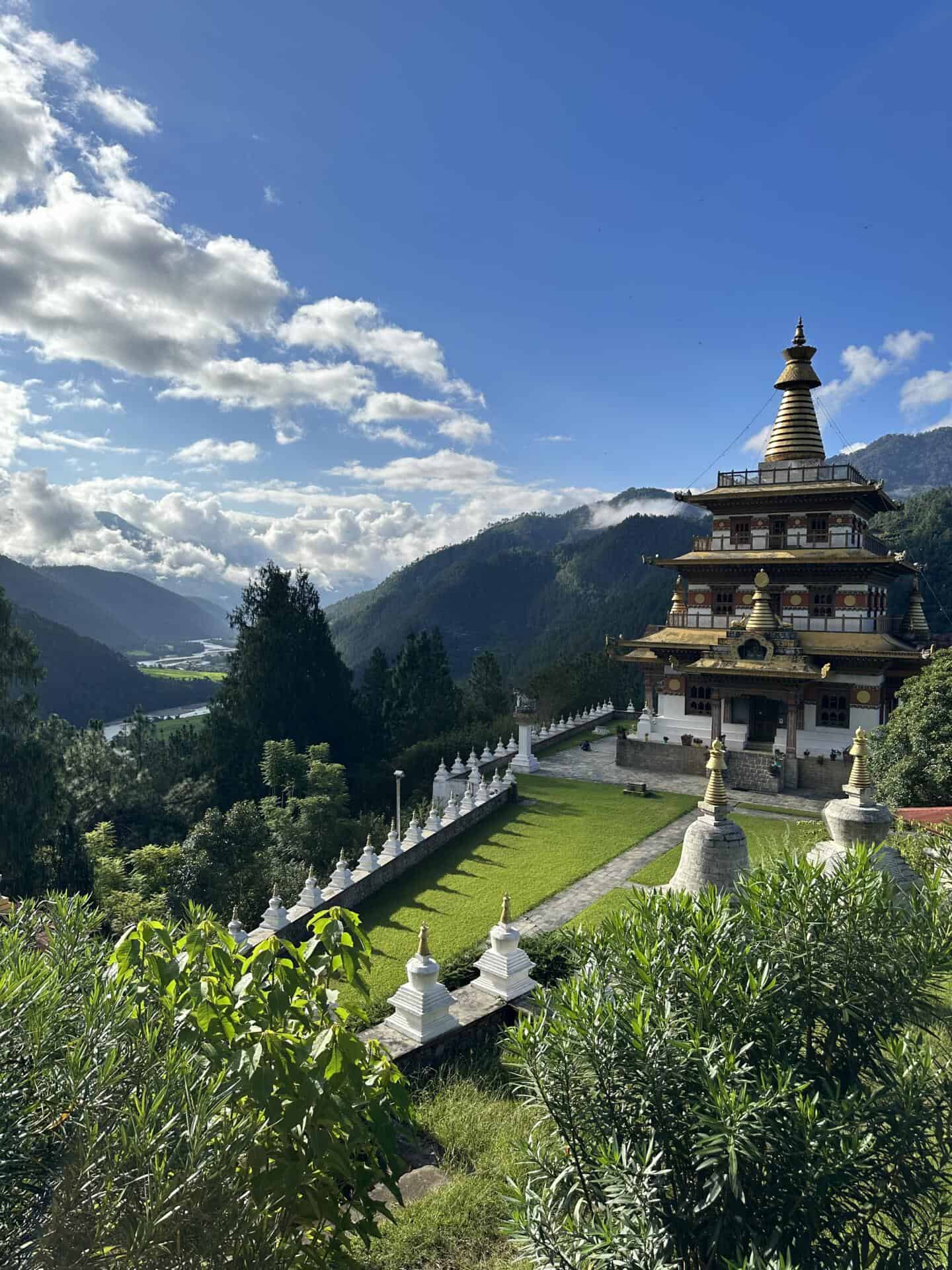
From trying your hand at archery in Thimphu and eating fiery ema-datshi in Paro to bird watching in Lamperi Botanical Gardens in Punakha, 10 experiences to try in Bhutan.
People visit Bhutan for its nature and its spirituality. They visit temples and monasteries, hike the Himalayas, and try to spot the golden langur or the blood pheasant. But there is another Bhutan, just below the surface and so far, largely inaccessible to tourists. This is the Bhutan of gewogs (villages), dzongs (fortified monasteries), suspended bridges, wildflower meadows and a food culture that is vibrant and unique. Fancy fiddlehead ferns, wild orchid curry, dried yak meat, and a variety of chilies. All these are now within reach, thanks to the Trans Bhutan trail that was opened last September. Some 400 km long and traversing the breadth of the country, the trail opens up this mysterious and lovely country in ways that were not possible before. The government has placed interactive signposts with QR codes that offer local history.
If hiking is not your thing, Bhutan is as luxurious as any other country. International brands like the Amankora, Como and Six Senses have operated for years here. This year, luxury safari operator, andBeyond opened the Punakha River Lodge. Everyone who visits Bhutan comes away changed in small and big ways. This small yet proud nation with its head in the clouds and feet in the Himalayas is spellbinding, and best of all, an example of sustainable tourism.

In Thimphu
1. Visit the Institute of Traditional Medicine: Bhutan’s view on health is holistic. Its traditional medicine begins with a pulse-reading and diagnosis of your constitution, using a combination of Indian Ayurveda and Tibetan medicine. Bhutan has a long history of healing. In fact, Bhutan was called Lhomenjong by Tibetans because it had an abundance of medicinal herbs. Today, an easy way to get a flavour of Bhutan is to bring home some Cordyceps tea. This highland fungus is prized (and expensive) in Bhutan for its healing benefits.
2. Focus with archery at the Amankora Thimphu: This stunning lodge on the outskirts of the national capital is surrounded by homes where Bhutan’s royal family lives. One of the activities on offer is lessons in archery, Bhutan’s national sport. Seemingly easy, archery requires balance, coordination, and a certain Zen stillness. After a few rounds, you will feel like the two brothers in the Ramayana.
3. Learn the intricate weaves of Bhutan at the Royal Textile Academy in Thimphu: Founded by the Queen Mother, this beautifully designed museum displays stunning thangkas with intricate weaves and embroideries. There are also demonstrations on how to wear the Gho (the traditional male attire) and the Kira (the women’s attire). The museum shop sells beautiful stoles and table runners.
Royal Textile Academy in Thimphu. (Photo credit: Narayan Ramachandran)

In Paro
4. Taste local dishes at the Uma Paro: Ruth Reichl once said that Bhutanese cuisine was the worst in the world. It may be time for her to reconsider. The meals I had in Bhutan during a recent trip included lightly sauteed fiddlehead ferns, brittlegrill mushrooms that were redolent and earthy, a variety of cheeses (datshi) including the national dish, the fiery ema-datshi with chopped chilies that make your mouth water. Enjoy a traditional Bhutanese dinner at Uma Paro made by Tshering Lhaden, who happens to be Bhutan’s top (female) executive chef.
5. Visit the National Museum of Bhutan in Paro: This tiny jewel of a museum has artefacts from ancient Bhutan and shows the advent of Buddhism in Bhutan. Best of all, it is not an overload. You can be in and out in 45 minutes.
6. Have a traditional hot stone bath: The luxury brands all offer this for a price. The Uma Paro has a lovely experience for US$150 per person. The same with Amankora. For a local experience, try the Tshering Farmhouse in Paro where you get into a private wooden bathtub filled with healing Artemesia leaves and bask for as long as you like.
7. Spend time at the airport: Visit the galleries, try excellent coffee and definitely go the Bhutan Post shop where you can buy a postcard, a lovely Bhutanese stamp with orchids, animals, or any other theme. Write a postcard, place the stamp, pay in the local currency or Rupees and send the postcard to friends and family all over the world. What a great idea.
In Punakha
8. Stay at the newly opened andBeyond in Punakha: This exclusive lodge has just eight villas over 50 acres. Located in the middle of paddy fields and rivers, it is a great base to explore Punakha. Go white-water rafting on the clear waters of Mo Chu or Po Chu rivers.
9. Visit the Punakha Dzong: This traditional fortress, called dzong in Dzongkha, Bhutan’s national language, is where the royal marriages take place. There are dzongs in every city in Bhutan. Punakha Dzong is arguably the prettiest.
10. Go bird watching in Lamperi Botanical Gardens: This park lies between Thimphu and Punakha and contains an ecosystem that holds close to a hundred species of birds. For birders, it is like being on an African safari. You won’t know where to look– there are so many species.






Leave A Comment